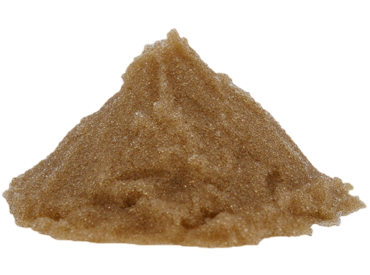Ion Exchange Resin for Various Application and Uses

To precisely address the diverse requirements of our clientele across various industries and applications, we operate through strategic business units encompassing a broad spectrum of technologies and applications. Currently, AP Air & Liquid Industrial Trading offers a comprehensive range of Ion Exchange Resins designed for diverse water treatment processes. To accommodate varied plant designs and operational parameters, we provide customers with a selection of Gel/Microporous or Macroporous structures and different performance grades. We ensure complete compatibility with existing resin systems for top-up requirements. Our dedicated Research and Development team is committed to continuous product enhancement and the maintenance of stringent quality assurance standards.
What Are Ion Exchange Resin
Ion exchange resins are synthetic organic polymers that are insoluble in water and contain functional groups with mobile ions. These resins are structured as a three-dimensional network of cross-linked polymer chains, most commonly made from styrene-divinylbenzene copolymers or acrylic polymers. The divinylbenzene cross-linking provides the resin with its insoluble matrix and mechanical strength.
Composition of Ion Exchange Resin
The key to the ion exchange capability lies in the functional groups chemically bonded to this polymer backbone. These functional groups are ionizable, meaning they can either carry a positive charge (for anion exchange) or a negative charge (for cation exchange). The mobile counter-ions associated with these fixed charges can be exchanged with ions of the same charge present in a surrounding solution.
Cation exchange resins typically feature negatively charged functional groups such as sulfonic acid groups (-SO₃⁻), found in strong acid cation (SAC) resins, or carboxylic acid groups (-COOH), found in weak acid cation (WAC) resins. The mobile counter-ions are usually sodium (Na+) or hydrogen (H+).
Anion exchange resins possess positively charged functional groups, often quaternary ammonium groups (-N⁺(CH₃)₃), as seen in strong base anion (SBA) resins, or primary, secondary, or tertiary amine groups, found in weak base anion (WBA) resins. The mobile counter-ions are typically chloride (Cl−) or hydroxide (OH−).
The physical form of ion exchange resins is usually small, porous beads, typically ranging from 0.25 to 1.25 mm in diameter. This bead form provides a large surface area for ion exchange to occur as solutions pass through a bed of the resin. The porosity of the beads allows ions to diffuse within the resin matrix to reach the exchange sites.
Ion Exchange Resin Applications
Ion exchange resins are incredibly versatile and find widespread use in various industrial, commercial, and laboratory applications, primarily involving the purification, separation, and decontamination of liquids. Some key applications include:
- Water Treatment: This is the largest application area, encompassing water softening (removal of calcium and magnesium ions), demineralization (removal of all dissolved salts), removal of heavy metals (like lead, mercury, and arsenic), nitrate removal, perchlorate removal, and the production of ultrapure water for industries like pharmaceuticals and microelectronics.
- Industrial Processes: Ion exchange is used in sugar purification, the recovery of valuable metals from mining and industrial wastewater, the purification of chemical solutions, and as catalysts in certain chemical reactions.
- Pharmaceuticals and Biotechnology: Applications include the purification of drugs, the separation of biomolecules like proteins and amino acids, and in drug delivery systems.
- Food and Beverage Industry: Used for decolorization of sugar solutions, debittering of citrus juices, and stabilization of wine.
- Power Generation: Essential for boiler feedwater treatment to prevent scaling and corrosion.
- Laboratory Analysis: Used in chromatography for separating ions and polar molecules, and for sample preparation
Comprehensive Characteristics Of Ion Exchange Resin
Ion exchange resins are characterized by several key properties that determine their suitability for specific applications:
- Capacity: This refers to the total amount of ions a given amount of resin can exchange. It’s typically expressed in equivalents per liter or per kilogram of resin.
- Selectivity: Different resins exhibit varying degrees of preference for certain ions over others. This selectivity is crucial for targeted removal or separation.
- Swelling: Resins swell to varying extents when in contact with water or other solvents. The degree of swelling depends on the polymer structure, cross-linking density, and the ionic form of the resin. Excessive swelling and shrinking cycles can affect the resin’s lifespan.
- Particle Size and Uniformity: The size of the resin beads affects the flow rate and pressure drop through a resin bed. Uniform particle size distribution is important for efficient and predictable performance.
- Mechanical and Chemical Stability: Resins must be physically robust to withstand the operational pressures and resist chemical degradation from the treated solutions and regeneration chemicals.
- Regeneration: Ion exchange is a reversible process. Once the resin is saturated with the target ions, it can be regenerated by passing a concentrated solution containing the original counter-ions through the bed, displacing the accumulated ions and restoring the resin’s exchange capacity. Common regenerants include brine (NaCl) for cation exchange resins in softening and acids or bases for demineralization and anion exchange resins.
In summary, ion exchange resins are synthetic polymer beads with specific functional groups that enable them to selectively exchange ions with a liquid solution. Their diverse properties make them indispensable tools in a wide array of applications requiring purification, separation, and decontamination, particularly in water treatment.
Achieve superior filtration results, enhanced product purity, and consistent output quality. Our meticulously engineered media delivers optimal performance, reducing waste and improving your final product. Partner with us to unlock higher standards and drive tangible improvements in your processes. Experience the difference quality media makes.
